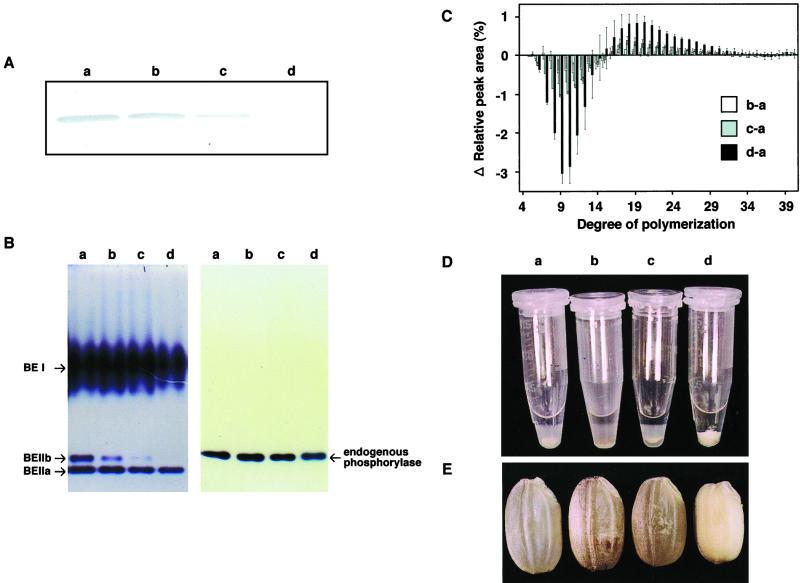Figure 3.
Gene dosage effects of the Ae allele on the level and activity of BEIIb, chain length distribution, gelatinization properties, and grain morphology. A, Western-blotting analysis of BEIIb in mature rice kernels. Protein was extracted from 20 mg of rice powder. The immunoblot was developed with antiserum raised against BEIIb from rice endosperm (Nakamura et al., 1992) at a dilution of 1:500. B, Native PAGE/activity stainings of BEs (left) and endogenous phosphorylase (right) in the endosperm of four genotypes. The migration and identification of each band corresponding to three BE isoforms (BEI, BEIIa, and BEIIb) and phosphorylase were according to our previous report (Yamanouchi and Nakamura, 1992). The volumes of crude enzyme extract applied were 0.67 and 6.7 μL for BE and phosphorylase, respectively. Note that the phosphorylase band was not detected under the lower protein concentration (0.67 μL of crude extract). C, Differences in the distribution of α-1,4-glucan chains among the four genotypes. The columns show the peak areas for each glucan chain from each genotype minus that from the wild-type cv Kinmaze. The sd was given from three separate experiments. D, Effects of 4 m urea on the swelling of starch granules from the endosperm of four genotypes. Ten milligrams of rice powder in an Eppendorf tube was mixed with 0.5 mL of 4 m urea, and shaken for 24 h at 25°C. After centrifugation, samples were allowed to stand for 1 h. E, Kernels from the four genotypes. a through d, Results for the four genotypes, AeAeAe, AeAeae, Aeaeae, and aeaeae, respectively.

